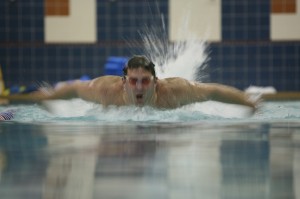Lowering cholesterol levels can be a struggle. The need for medication, although sometimes necessary, can often be decreased or eliminated through physical activity and proper nutrition. Although TV commercials and magazine ads often indicate otherwise, sometimes we can escape our genetic predisposition to high cholesterol through an active, healthy lifestyle. In other words, Aunt So-and-So with high blood fat levels does not automatically determine your destiny.
Perhaps you’ve recently been diagnosed with high cholesterol, or you’re taking a proactive approach to avoid it. Here are ways to lower LDL (bad cholesterol), raise HDL (good cholesterol), and lower those pesky (and often misunderstood) triglycerides. According to research, adherence to a regular exercise routine can lower LDL cholesterol by 5 to 10 percent and raise HDL cholesterol by 3 to 6 percent. Therefore, along with a healthy diet, physicians usually recommend exercise as your first defense against battles with cholesterol.
A Cholesterol-lowering Fitness Plan
Many studies have shown the benefits of aerobic exercise in heart health. This doesn’t have to be intense. Low-impact exercise regimens also can improve those elevated numbers. This is good news for those not yet ready for Boxing Camp or Zumba. Your day will come, but you need a program you can start without delay. Those numbers have a way of creeping up when we procrastinate.

Consider aquatic exercise, give the elliptical equipment your best, or investigate an interesting Group Fitness class. (See the Center’s Web site for the latest Group Fitness schedule.) Take advantage of the Center’s aquatic offerings. Swimming has shown to be a powerful cholesterol-lowering activity. Find something you enjoy and engage in it. This will make it easier to remain committed and quicker to accomplish results. Weight training is also valuable and can complement the cardio aspect of your workout.
Studies indicate that yoga and Tai Chi have beneficial effects on cholesterol levels. However, it is unclear as to what extent study participants exerted themselves during these activities. Particularly with yoga, there are a variety of types and skill levels, which can determine benefits gained.
Exercise Requirements
The goal of your fitness program should be to increase oxygen intake and raise heart rate for more than 12 minutes most days of the week. Aerobic exercise for 30 minutes each day is recommended for maximum results. Sound overwhelming? These 30 minutes don’t have to be accomplished in one session. If your schedule is packed, squeeze in15-minute slots for aerobic activity between other commitments.
Be sure to achieve your target heart rate during whichever activity you chose. Your target heart rate should be between 60 and 80 percent of your maximum heart rate, for the most impressive results. A personal trainer, Group Fitness instructor, or on-site nurse can help determine your target heart rate zone. They can also advise on safe, effective aerobic exercises to help you reach your goals.
Those Shifty Triglycerides
Triglycerides are a type of fat, and provide the body with energy necessary for everyday living. They are either generated in the liver or consumed in foods. High levels are thought to contribute to heart disease, especially when present with high LDL cholesterol levels. High levels can be blamed on those unavoidable genetics again, a high-fat diet, or underlying medical conditions, including diabetes, obesity, and hypothyroidism.
It is unclear if high triglycerides alone can increase your risk for coronary heart disease. Studies have produced conflicting results. They often appear as the henchmen to increased LDL numbers, thereby making it difficult to convict them on their own standing. Regardless of their disputed direct link to illness, as with any other blood panel levels, you want to keep them in normal range. Exercise is the ideal way to accomplish this. (And, stop munching on the cheese fries.)
Know Your Numbers
You’ve heard that said before. With information, you can better work toward your healthiest life. Routine blood testing can determine your cholesterol and other pertinent health facts. Discuss the results with your physician and follow through with his/her guidance.
The Side-effects Are Great
Although your fitness goal might be to help improve your blood fat panel scores, with exercise you get so much more. By any standards, the time invested can be considered a bargain. Benefits include lower blood pressure, a stronger cardiovascular system, healthier body weight, decreased stress levels, and improved lung functioning. Exercise is cathartic for the body and mind. That’s a “side-effect” you won’t find with any cholesterol-lowering drug.
Sources
“HDL Cholesterol: How to Boost Your ‘Good’ Cholesterol” at www.mayoclinic.com.
“Is There a Link Between Exercise and Cholesterol?” Jennifer Moll at www.about.com.
“Low Impact Exercise and Cholesterol,” Betsy Lee-Frye, at www.about.com.
“What Are High Triglycerides?” Jennifer Moll, at www.about.com.
“Which Types of Exercise Can Be Used to Lower Cholesterol?” Jennifer Moll, at www.about.com.
Image Credit
Man jogging with baby: www.flickr.com/photos/mikebaird/2913345328/
 Fitness & Wellness News Your Source for Fitness News, Wellness News, Health News, and Nutrition News!
Fitness & Wellness News Your Source for Fitness News, Wellness News, Health News, and Nutrition News!



